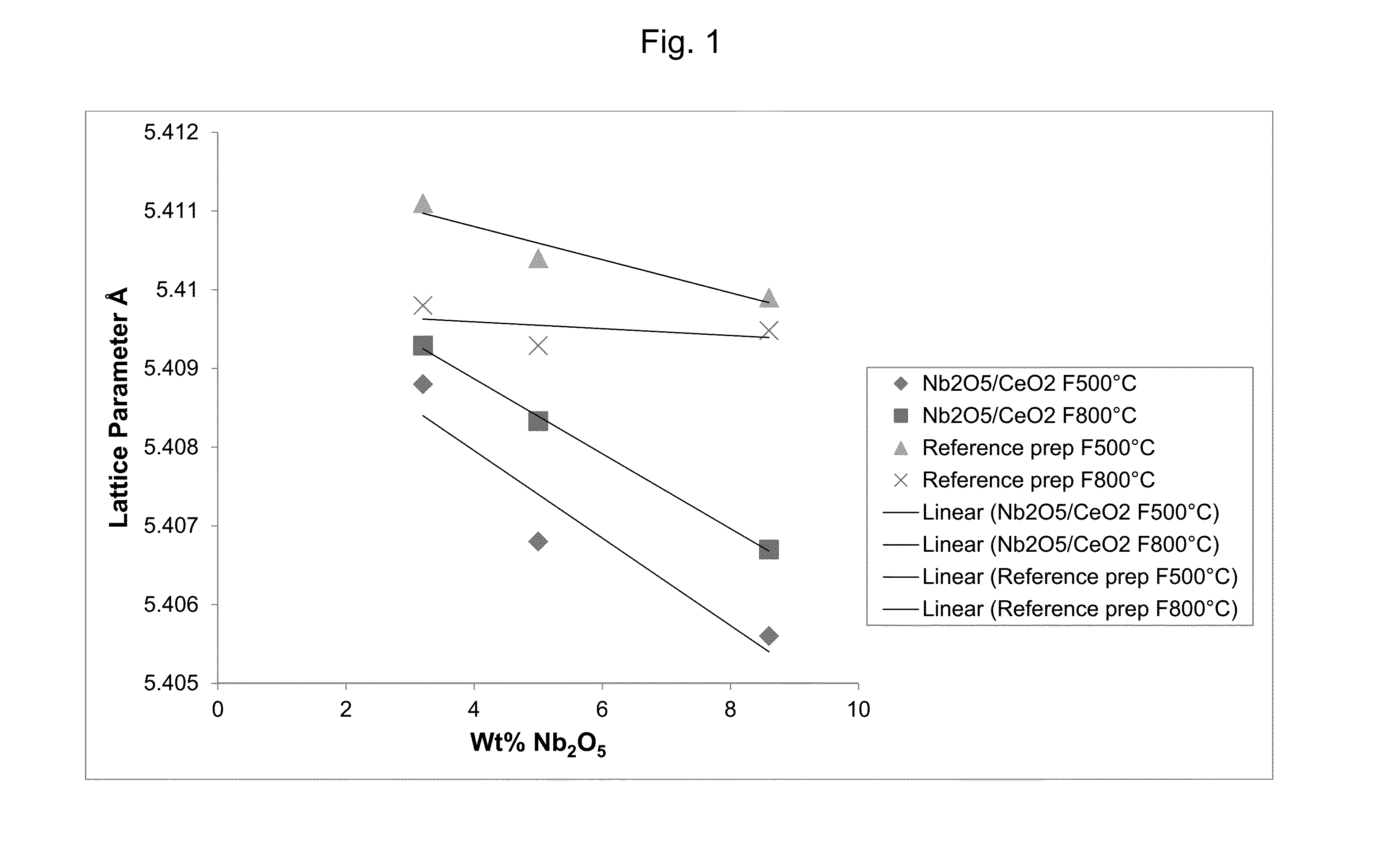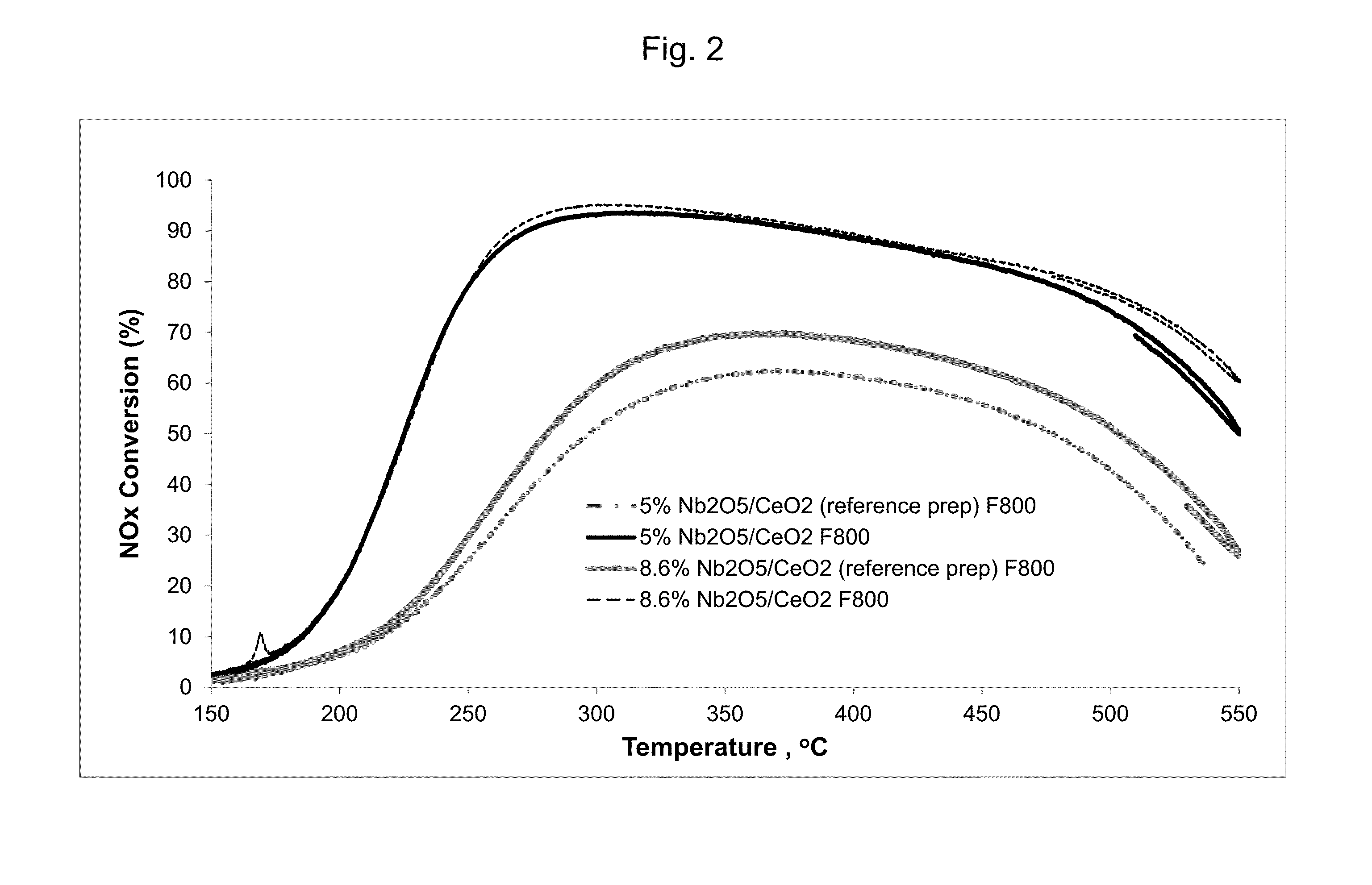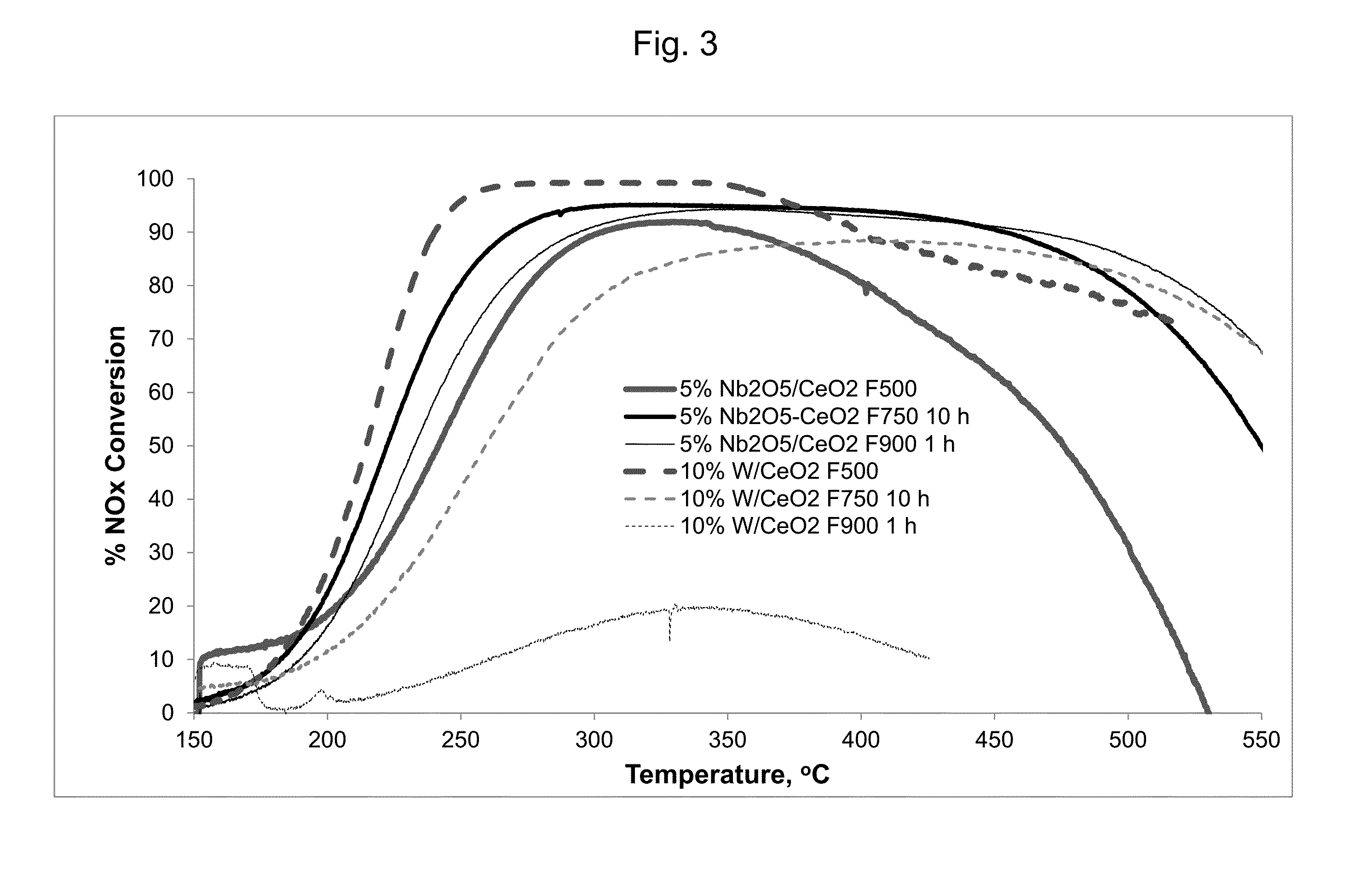Selective catalytic reduction processes using doped cerias
a catalytic reduction and selective technology, applied in the direction of metal/metal-oxide/metal-hydroxide catalysts, machines/engines, arsenic compounds, etc., can solve the problems of reducing the efficiency and generating backpressure, so as to achieve the no2 level, reduce the size, complexity, and cost of the exhaust treatment system
- Summary
- Abstract
- Description
- Claims
- Application Information
AI Technical Summary
Benefits of technology
Problems solved by technology
Method used
Image
Examples
example 1
Preparation of Niobia-Doped Ceria (3.2 wt. % Nb2O5)
[0089]Ammonium niobate(V) oxalate (21% Nb, 1.06 g, 2.4 mmol Nb, equivalent to 0.32 g Nb2O5) is dissolved in water (6 mL) with stirring and gentle warming. High-surface-area ceria (9.68 g) is added, and the mixture is stirred. The pore volume of the ceria is slightly exceeded so the sample is stirred / warmed to dryness on a hotplate. The sample is further dried in an oven at 105° C. Portions of the sample are calcined (“fired”) at 500° C. for 2 h or at 800° C. for 4 h (10° C. / min ramp rate).
example 2
Preparation of Niobia-Doped Ceria (5.0 wt. % Nb2O5)
[0090]The procedure of Example 1 is generally followed using ammonium niobate(V) oxalate (3.33 g, 7.52 mmol Nb, equivalent to 1.0 g of Nb2O5), ceria (19 g), and water (12 mL).
example 3
Preparation of Niobia-Doped Ceria (8.6 wt. % Nb2O5)
[0091]The procedure of Example 1 is generally followed using ammonium niobate(V) oxalate (2.86 g, 6.47 mmol Nb, equivalent to 0.86 g of Nb2O5), ceria (9.14 g), and water (6 mL).
[0092]In Comparative Examples 4-6, the procedure of PCT Int. Publ. No. WO 2012 / 004263 (Rhodia) is generally followed to produce catalysts in which ceria is formed in the presence of niobia. Based on the preparation method, the catalysts should have a core of niobia surrounded by a ceria shell.
PUM
| Property | Measurement | Unit |
|---|---|---|
| temperature | aaaaa | aaaaa |
| temperature | aaaaa | aaaaa |
| wt. % | aaaaa | aaaaa |
Abstract
Description
Claims
Application Information
 Login to View More
Login to View More - R&D
- Intellectual Property
- Life Sciences
- Materials
- Tech Scout
- Unparalleled Data Quality
- Higher Quality Content
- 60% Fewer Hallucinations
Browse by: Latest US Patents, China's latest patents, Technical Efficacy Thesaurus, Application Domain, Technology Topic, Popular Technical Reports.
© 2025 PatSnap. All rights reserved.Legal|Privacy policy|Modern Slavery Act Transparency Statement|Sitemap|About US| Contact US: help@patsnap.com



